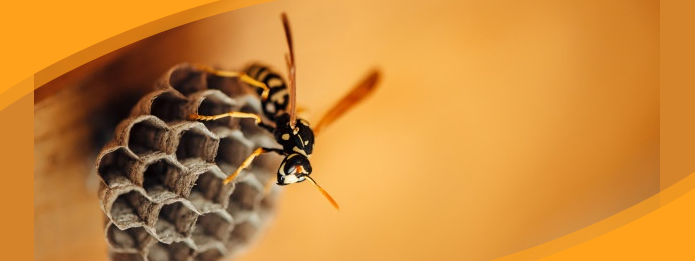Winterizing Your Property: How To Find and Remove Wasp Nests

As fall arrives and you make plans for winterizing your home, one action you might want to consider is searching out where wasps and hornets might nest over the cold winter months. Many wasp species seek out warm, safe places to protect their females and larvae until the spring, and if they hatch inside your home, you could find yourself dealing with a troubling infestation. Knowing how to spot these nests and when to call wasp control in Cambridge may help you avoid this issue.
Observe Wasps Around Your Home
Wasps are social insects and live in large family groups of both males and females. When the cold weather starts to set in, the male worker wasps search for a place to nest that will protect the queen and growing larvae. If you suspect that wasps are building around your home, observe them from a safe distance, and you may discover where the new nesting locations are. This is quite common, especially during winter when wasps are in survival mode.
Although wasps are affected by weather changes, it is important to remember that they may remain alert and territorial on warm fall days. If you see a large nest, call us for wasp control in Cambridge instead of trying to knock down the nest on your own, as this could trigger an aggressive response in the wasp colony. In most cases, the warmer the weather, the more active the wasps are likely to be.
Check Eaves and Porches
Paper wasps often build on wooden structures, such as under porch eaves or in their corners, where the nests are not always visible. Since these sheltered spots would protect the nest over the winter, checking these spots in the fall may help you prevent an infestation later on. The start of a nest will resemble miniature egg cartons, and several wasps may be present. You may be able to spray and remove these starter nests, but avoid trying to handle larger builds on your own.
Most wasp species are not particular about the kind of building material they construct their nests on, so you might find them on the wooden beams of your porch roof or the metal awning over the entranceway to your front hall. Wasps that build near main doorways can be especially dangerous, as human and pet activity in these locales may cause them to act aggressively.
Address Possible Entrance Points
As worker wasps seek out possible nesting sites, they might enter your home if they can find a way in. Holes in window and door screens, around vent openings and in gaps between roof shingles might all allow wasps inside to build their nests. An infestation in the attic might be especially troubling because you may not know it is there until the spring when the larvae hatch and your attic becomes infested.
Before the colder weather sets in, you can take steps to wasp-proof your home by caulking or otherwise sealing gaps around entranceways and vents. Remember that wasps are not very large and can make their way into small crevices. Check your home’s air ducts to ensure no wasps have made their way into the ductwork to settle there for the winter.
Inspect Sheds and Storerooms
Enclosed sheds and storerooms might encourage wasps to build either inside or on the exterior of these structures, especially if they are not used often. Repairing or replacing run-down sheds and other storage spaces can prevent wasps from building there. If you do find a large nest in or around your shed, call in our wasp control team for safe and efficient removal.
Wasps can find their way into your home when cold weather approaches and build nests in your attic or even inside your walls. Call us today for wasp control and removal to gain peace of mind all winter long.